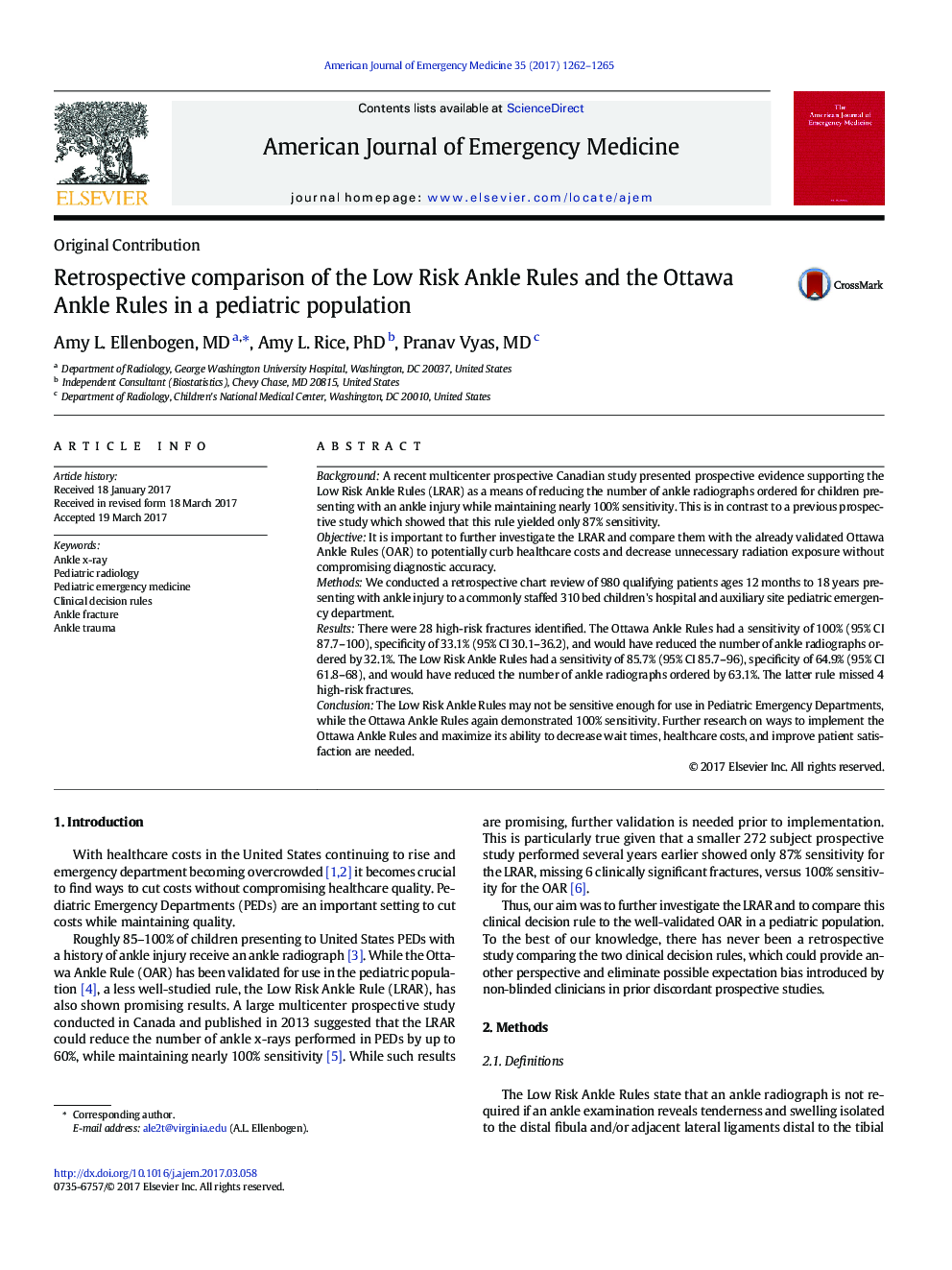| Article ID | Journal | Published Year | Pages | File Type |
|---|---|---|---|---|
| 5651090 | The American Journal of Emergency Medicine | 2017 | 4 Pages |
BackgroundA recent multicenter prospective Canadian study presented prospective evidence supporting the Low Risk Ankle Rules (LRAR) as a means of reducing the number of ankle radiographs ordered for children presenting with an ankle injury while maintaining nearly 100% sensitivity. This is in contrast to a previous prospective study which showed that this rule yielded only 87% sensitivity.ObjectiveIt is important to further investigate the LRAR and compare them with the already validated Ottawa Ankle Rules (OAR) to potentially curb healthcare costs and decrease unnecessary radiation exposure without compromising diagnostic accuracy.MethodsWe conducted a retrospective chart review of 980 qualifying patients ages 12Â months to 18Â years presenting with ankle injury to a commonly staffed 310 bed children's hospital and auxiliary site pediatric emergency department.ResultsThere were 28 high-risk fractures identified. The Ottawa Ankle Rules had a sensitivity of 100% (95% CI 87.7-100), specificity of 33.1% (95% CI 30.1-36.2), and would have reduced the number of ankle radiographs ordered by 32.1%. The Low Risk Ankle Rules had a sensitivity of 85.7% (95% CI 85.7-96), specificity of 64.9% (95% CI 61.8-68), and would have reduced the number of ankle radiographs ordered by 63.1%. The latter rule missed 4 high-risk fractures.ConclusionThe Low Risk Ankle Rules may not be sensitive enough for use in Pediatric Emergency Departments, while the Ottawa Ankle Rules again demonstrated 100% sensitivity. Further research on ways to implement the Ottawa Ankle Rules and maximize its ability to decrease wait times, healthcare costs, and improve patient satisfaction are needed.
